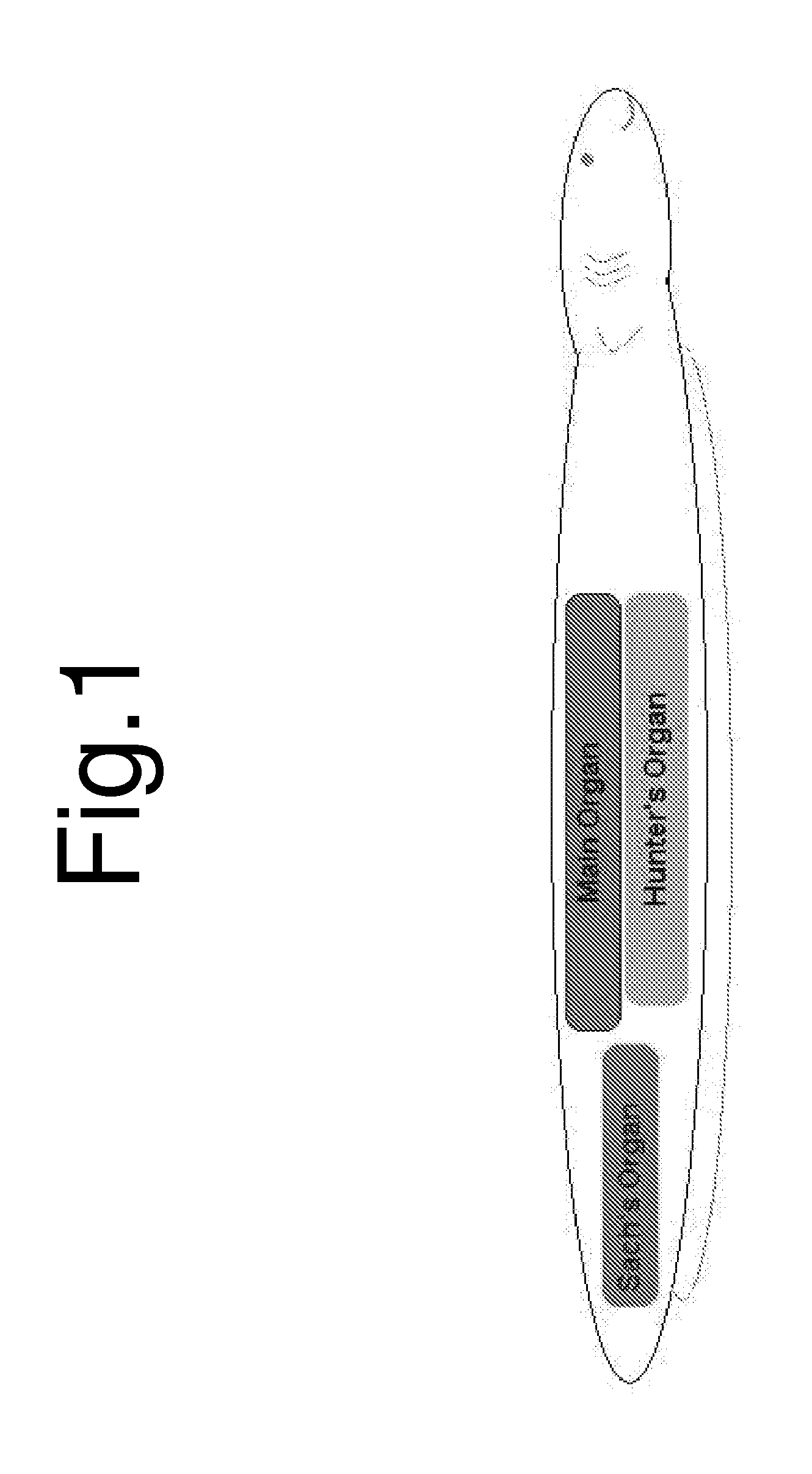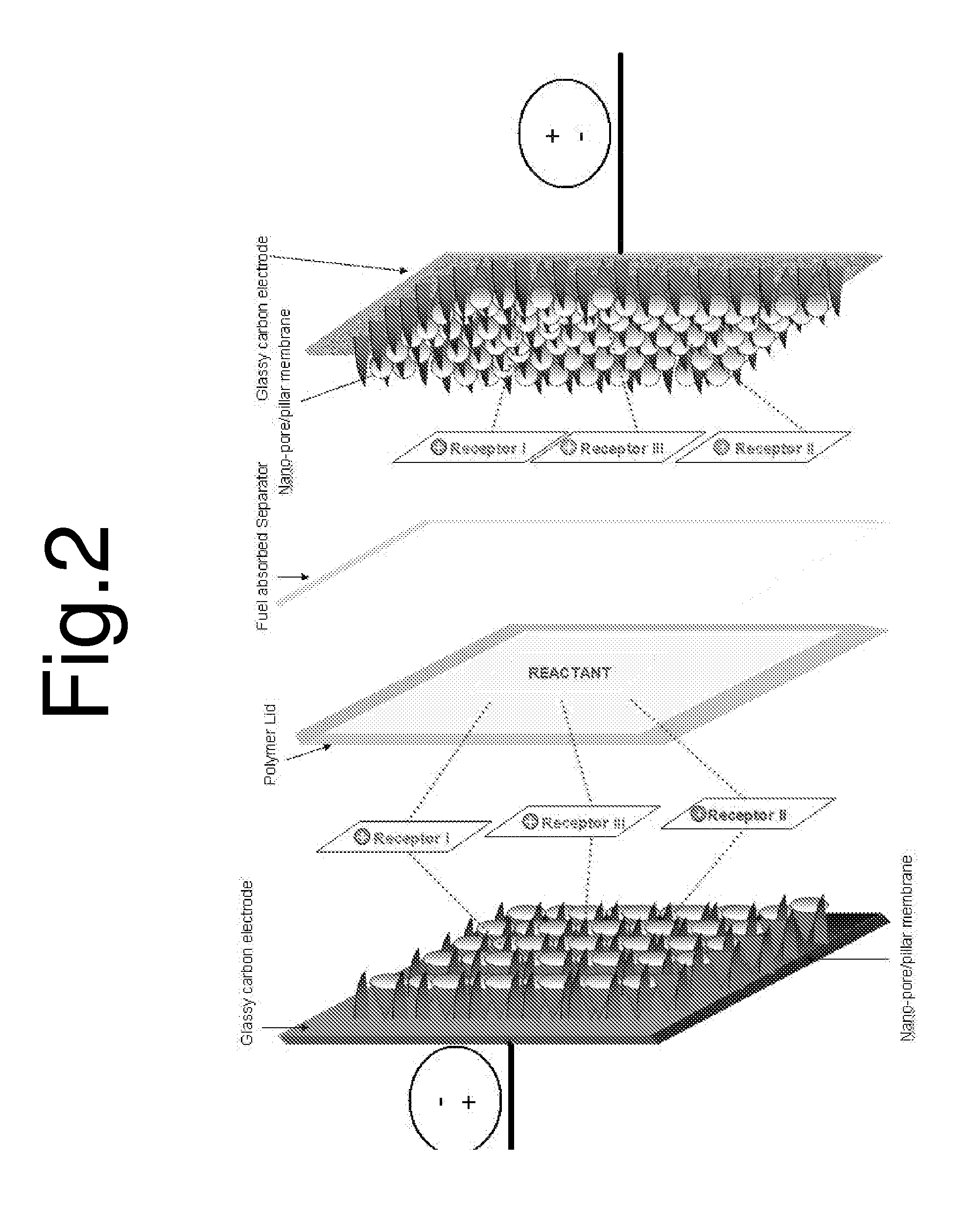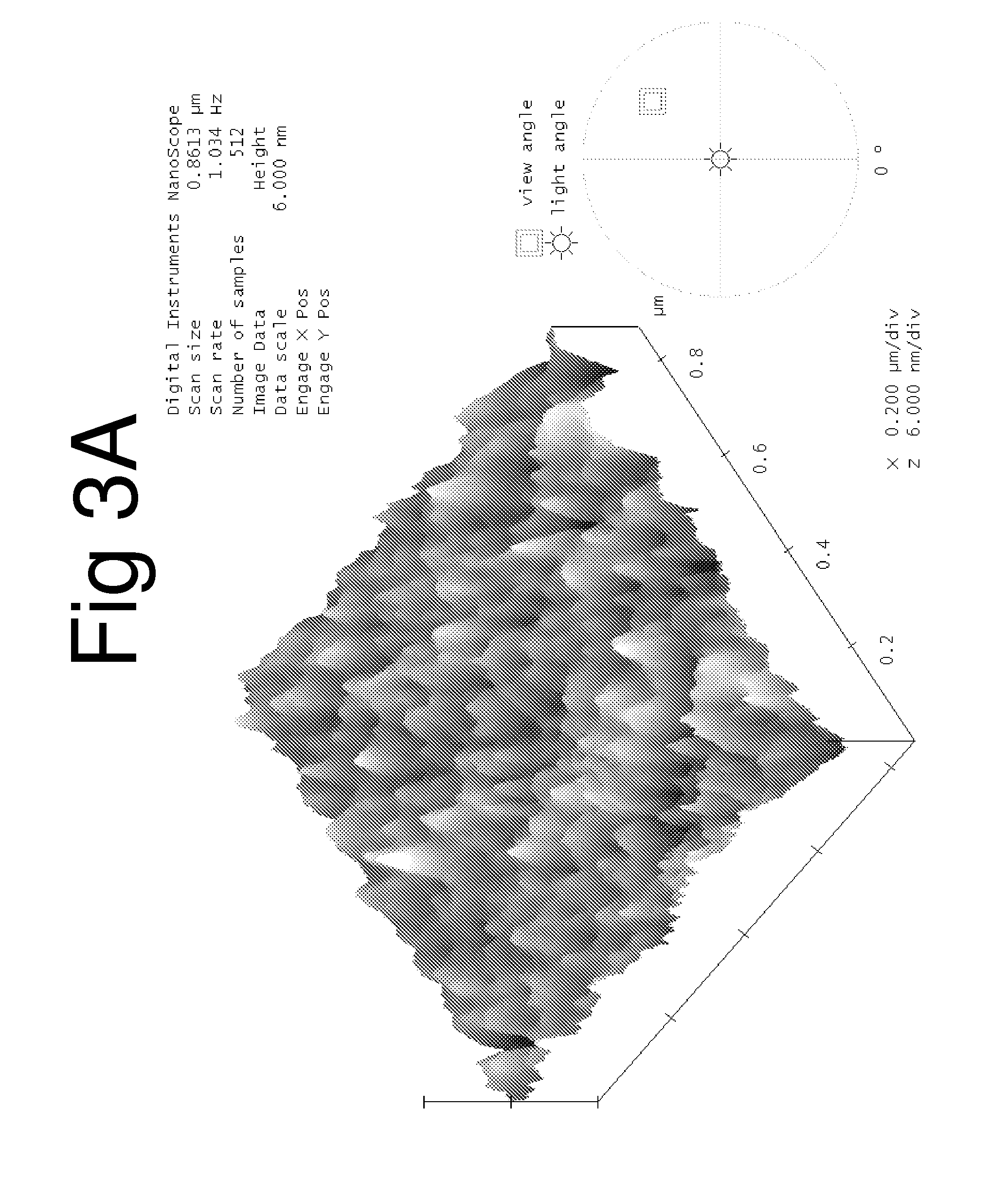Nanobiomimetic Supercapacitors with High Rate High Energy Storage
a supercapacitor and micro-biomimetic technology, applied in the field of new generation of nano-biomimetic supercapacitors, can solve the problems of cosub>2 /sub>emission, large volume, heavy current ammunition systems, etc., and achieve the effect of short discharge time and slow discharge ra
- Summary
- Abstract
- Description
- Claims
- Application Information
AI Technical Summary
Benefits of technology
Problems solved by technology
Method used
Image
Examples
example 1
Asymmetric Construction of Supercapacitors
[0027]Supercapacitors have two categories by energy storage mechanism: electrochemical double-layer capacitors (DLCs) and redox supercapacitors [see reference 10-12]. An approach to overcome the low Gravimetric Energy Density (GED) of the DLS supercapacitor is to use an asymmetric design: 1. the positive electrode has a low degree of polarization, and 2. the negative electrode has a high degree of polarizability in an attempt to enlarge the window of the difference of the potential change during charge and discharge [see reference 12]. After E. Chen's group developed an electrolyte-free and oxygen-independent battery / fuel cell device [see reference 8-9], the GED and the power density performances were superior. However, to develop a prototype supercapacitor with a RMP property that is capable to mimic the multiple-organ discharge function of the eel fish, we designed a pair of membranes having “Den-well” structure, not only it facilitates th...
example 2
Method to Fabricate the Nano-Structure SAM on GC Electrode
[0028]The 1 cm2 GC Electrodes were purchased. Polyethylene glycol diglycidyl ether (PEG) was purchased from Sigma. Prepare a T-CD solution (8-10 g / L) in methanol, a poly(4-vinylpyridine) (PVP) solution (0.4-1.0 g / L) in 10 mM 4-(2-hydroxyethyl)-1-piperazine-ethanesulfonic acid (HEPES) that contains 50% methanol and a β-CD copolymer (0.01-0.03 g / ml) in HEPES. All prepared solutions were filtered, sonicated, and degassed. The mixture solution was made of 20-35%:10-20%:25-30%:15-45% (v / v) by T-CD: PEG: PVP: CD polymer, respectively. The 1 cm2 GC electrode was cleaned before use by a commonly used procedure. The 200 μL mixture solution was injected onto one side of the surface of the GC electrode in a certified class 100 level of a clean room and was incubated for 48 hrs at 35° C. in an incubator. After that, the SAM / GC electrode was washed by extra pure DI water for 10 minutes, then was re-incubated for 2 hrs at same temperature,...
example 3
“Multiple-Organ” Discharge
[0035]Electrophorus Electricus (EE) is know to its discharge electric voltage pauses through multiple organs based on Reversible Membrane Potential (RMP) [see reference 1-2]. The ionic exchange could be the major source caused the RMP according to R. D. Keynes's hypothesis [See reference 2]. B J. Hawkins et al pointed out that maintaining mitochondrial RMP for human cells are very important to avoid many diseases, such as myocardial infarction, stroke, cancer and neurodegeneration [See reference 20], because these patients' mitochondrial RMP values are usually lose. Using the invented design of the supercapacitor with features of electrolyte-free, and air-independent is to simplify and eliminate the error source contributions from the device membrane, because most patients' ion channels are dysfunction, RMP is dysfunction, hence design a Biomimetic eel fish with no ionic channeling, but a perfect functioning RMP will open a door for errorless monitoring and...
PUM
 Login to View More
Login to View More Abstract
Description
Claims
Application Information
 Login to View More
Login to View More - R&D
- Intellectual Property
- Life Sciences
- Materials
- Tech Scout
- Unparalleled Data Quality
- Higher Quality Content
- 60% Fewer Hallucinations
Browse by: Latest US Patents, China's latest patents, Technical Efficacy Thesaurus, Application Domain, Technology Topic, Popular Technical Reports.
© 2025 PatSnap. All rights reserved.Legal|Privacy policy|Modern Slavery Act Transparency Statement|Sitemap|About US| Contact US: help@patsnap.com



